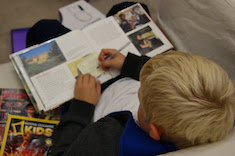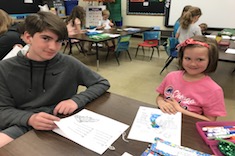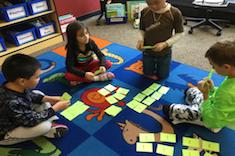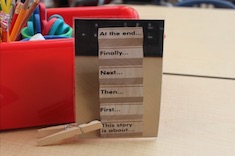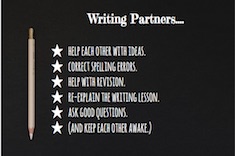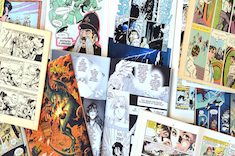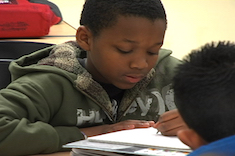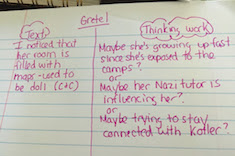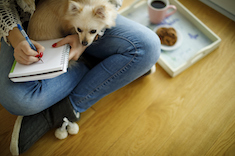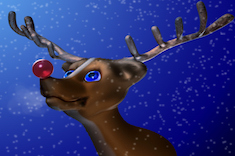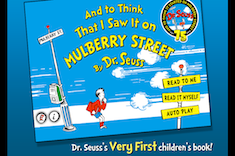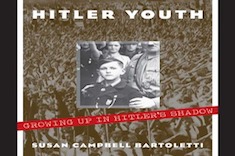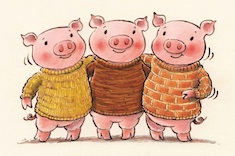Articles
Here is where you’ll find all the latest print features from our contributors. If you’d like to browse specifically by grade level, topic, or contributor, you can use the links in the right sidebar.
Latest Content
Making Learning Stick: Learning Progressions and Student-Created Exemplars
Tammy Mulligan explains the process of having students analyze and create models of good writing and analysis for assessing themselves and peers.
Can a High-Stakes Assessment Create Readers?
Stephanie Affinito encounters an unexpected by-product of testing for her son—the uninterrupted reading time waiting for others to finish builds a good habit. She shares how teachers might reclaim 10 minutes a day for independent reading.
Teaching Constructed Response Before Exams
Teaching the genre of tests can seem far removed from writing workshop. Matt Renwick explores how to teach constructed response in a way that is integrated with the tenets of good workshop instruction.
Don’t Force Vulnerability
Ruth Ayres eavesdrops on some moms complaining about homework assignments, and finds the experience leads to reflection on the dangers of forcing students to make themselves vulnerable in classrooms.
Creating a Safe Space in Middle School
Christy Rush-Levine ponders what it means to create a safe space for all of her middle school students, and then makes some changes.
Poetry and Pastiche
Tara Barnett and Kate Mills introduce their middle school students to pastiche, a technique of mimicking the craft of favorite poems and poets.
Kindergarten and Middle School Poetry Partnership
Middle schoolers and kindergartners forge friendships at Katherine Sokolowski’s school through a sweet poetry writing and sharing project.
Quick and Easy Word Study Groups in First Grade
Bitsy Parks shares some of her favorite strategies for quick and meaningful word work groups in her first-grade classroom.
Teaching Transition Words
Tara Barnett and Kate Mills work with a second-grade team to think through how best to teach transition words during a fairy tale unit, especially to students who are English learners.
Writing Partners
Partner work is an essential component of many literacy workshops. Dana Murphy explains how she is intentional in building thoughtful routines and expectations for partner work in her fifth-grade classroom.
Exploring Author’s Craft in Graphic Novels
Christy Rush-Levine finds her middle school students need more support and scaffolds to understand authors’ craft in graphic novels.
Trauma and Literacy
Jen Schwanke remembers her own experiences with trauma as a scared young girl, and how one kind teacher made all the difference in putting her on the path to healing. This makes her ponder the power of literacy in reaching wounded students in our midst.
Kids Teaching Kids: Student-Led Lessons
Nawal Qarooni Casiano outlines the process for empowering students to lead lessons for classmates.
Pairing Video Clips with Text: The Great Depression
Mark Levine has his middle school students “closely read” paired videos as well as texts to ponder the value and accuracy of different historical sources.
Self-Esteem and Literacy: Understanding Jeff
Jeff is apathetic and unengaged. To help this middle school learner, Mark Levine needs to understand his history. Mark shows the power of interviews for connecting with struggling teen learners.
Collaborating for Understanding in Writing
Mark Levine realizes explaining expectations for an essay assignment over and over again isn’t working. But when he has students write in pairs for a portion of his workshop, magic happens.
Reading Mats Build Confidence
Tammy Mulligan explains how the use of the popular “reading mats” can help build reader confidence.
Appointment Clocks
Gretchen Schroeder uses “appointment clocks” to ensure her students meet with a variety of peers for partner work.
It’s All in the Details
Tara Barnett and Kate Mills find their middle school students need some scaffolding to tease out essential details in literature.
Writers Make Plans
Tammy Mulligan considers the rituals she has for preparing to write, and then uses what she learns in classroom writing workshops.
Community Timeline Project
Katherine Sokolowski uses the Community Timeline Project to bring together students and older community members around history and writing. Includes a downloadable interview guide to help students record the interviewee’s life story.
Reading and Writing for the 100th Day of School
The 100th day of school has become an opportunity for classroom and schoolwide celebrations. Shari Frost provides many resources to ensure reading and writing are front and center on this special day.
Teaching Theme Before the Holidays
Tara Barnett and Kate Mills take advantage of students’ knowledge of Rudolph the Red-Nosed Reindeer to teach the concept of theme before the holiday break.
A Quick How-to Writing Unit in First Grade
Bitsy Parks uses the short stretch before the holidays for a quick and fun how-to writing unit with her first graders.
Scaffolding Instruction in an Author Study
Christy Rush-Levine scaffolds her middle-school students’ understanding of craft moves by moving from short stories to novels when studying specific authors.
Magic Connections: Young Adult Literature in a Social Studies Class
Mark Levine shows how young adult literature is a potent tool to drive learning in his middle school social studies classroom.
When Learning Gets Tricky, Go Back to the Pigs
Whenever a tricky literary concept comes up, Tammy Mulligan finds herself returning to a favorite mentor text to guide students. She explains the value of shared simple stories for understanding complicated literary elements.
Mentor Text Craft Guides
Melanie Meehan helps students see the craft moves in mentor texts by tucking brief guides into many of her favorite children’s books in the classroom library.
The Freewrite Pause
Mark Levine finds his middle school students need more time to digest learning from brief articles. Freewriting provides the perfect pause for promoting more reflection and insight.
Mastering Conventions
Even eight-year-olds are expected to master a dozen or more conventions. Melanie Meehan shares a process for helping students focus on the small steps needed to master any convention with peer support.
Browse Content By
Type
Category
- Assessment Tools
- Big Fresh Archives
- Booklists
- Choice Numeracy
- Classroom Design
- Common Core
- Community Building
- Conferring
- Content Literacy
- Digital Literacy
- English Language Learners
- Equity
- Family Relations
- Free Samples
- Guiding Groups
- Leadership
- Literacy Coaches
- Mentor Texts
- Minilessons
- New Teacher Mentors
- Podcasts
- Poetry
- Quote Collections
- Reading Strategies
- Self Care
- Struggling and Striving Learners
- Talking and Listening
- Teacher Study Groups
- Teaching Reading
- Teaching Writing
- Word Study and Vocabulary
Author
- Melissa Quimby
- Nawal Qarooni
- Gwen Blumberg
- Julie Cox
- The Lead Learners
- Hannah Tills
- Josie Stewart
- Ruth Metcalfe
- Mallory Messenger
- Becca Burk
- Jodie Bailey
- Vivian Chen
- Mary Brower
- Tiffany Abbott Fuller
- Stephanie Affinito
- Ruth Ayres
- Leigh Anne Eck
- Heather Fisher
- Shari Frost
- Julie Johnson
- Suzy Kaback
- Gigi McAllister
- Shirl McPhillips
- Melanie Meehan
- Cathy Mere
- Debbie Miller
- Tara Barnett and Kate Mills
- Tammy Mulligan
- Dana Murphy
- Bitsy Parks
- David Pittman
- Brenda Power
- Heather Rader
- Matt Renwick
- Mandy Robek
- Christy Rush-Levine
- Gretchen Schroeder
- Jen Schwanke
- Brian Sepe
- Katherine Sokolowski
- Stella Villalba
- Jennifer Vincent
Grade Level
Choice Literacy Membership
Articles
Get full access to all Choice Literacy article content
Videos
Get full access to all Choice Literacy video content
Courses
Access Choice Literacy course curriculum and training

